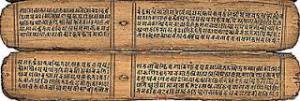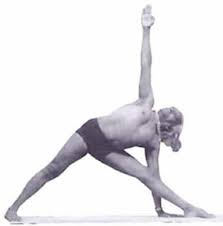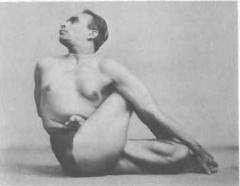
Stress
One of the most common reasons why people join yoga classes is to learn how to deal with day-to-day stress.
Here are a few definitions of stress:
“Stress is a physiological response to any change, whether good or bad, that alerts the adaptive fight or flight response in the brain and the body.”
“Feeling overwhelmed or negatively challenged by a circumstance or an event that places a demand on the body, mind and/or emotions that is perceived as beyond our ability to handle.”
“The body’s response to any demand, when forced to adapt to change.”
The modern fast-paced lifestyle puts a lot of demands on the mind and body. We convert these to mental stress as we find ourselves unable to deal with these rapidly changing events and situations. As you can see, the main cause of what we perceive as stress is our inability to deal with the event or situation that we are presented with at any given time.
If you do a google search on stress, you will find a multitude of articles with titles like:
- Managing stress
- Coping with stress
- Handling stress
- “x number of ways” to deal with stress
- Eliminating stress
- … etc.
The list goes on… Most of the material presents ways to “treat the symptoms” which is not unlike how any other ailment is treated by modern medicine.
However, you don’t find too many references giving us a deep look at what causes stress in the first place. After all if we want to treat an ailment, the best way is to uproot the very root cause of the ailment.
We all know that stress originates in the mind. It then manifests in multiple physical, physiological and mental problems. For example, many of my students tell me that stress for them manifests as pain in the shoulder or neck or the back etc. At a deeper level, stress has been identified as the cause for more serious ailments like blood pressure, heart problems, diabetes etc.
But the key factor to remember is that the origin of stress is in the mind. Mind is where the stress is being created. The next question is “whose mind are we talking about?” If I am feeling stressed, then it is my mind where the stress is happening. If it is my mind, I need to learn how to take control of the mind. In order to take control, I need to understand the functioning of the mind. It is, therefore, apparent that in order to understand stress we need to first develop a deeper understanding of the mind itself.

Stress, all in the mind
To understand the mind, we turn to our revered teacher, Sage Patanjali, who gave us the art and science of yoga in his “Yoga Sutras”. In the very second sutra, Patanjali defines yoga as “control of the fluctuations of the mind-field”. As we observed earlier, stress is something that originates in the mind field. In that sense, it is a fluctuation in the mind. Since yoga is learning how to control the fluctuations of the mind, then, by its very definition, yoga is effectively stress management.
In the Yoga Sutras, Patanjali provides us an in-depth understanding of the functioning of the mind. In a previous article, I had discussed the way the mind functions. A quick review of that article will help you understand the cause of stress presented here better.
As discussed in the article referenced above, the mind can be thought of as being a composite of four functions – cognitive, intellect, ego and memories.
It is the memory where we store all the past impressions, called “samskaras”. All our actions, reactions, thoughts, behavior patterns, emotions etc. get recorded in the memory. As per yoga philosophy, these impressions are not just from this life but also from previous lives. This memory contains what we like, what we dislike, what we fear etc. When we are confronted with a situation, we find a match with what is stored in the samskaras. If the pattern matches with what we like, we become happy; if the pattern matches with what we dislike, we become unhappy, angry, jealous or greedy etc. Again, as I explained in the article referenced earlier, all this pattern matching and the subsequent feelings and emotions that erupt in the mind are controlled by the ego. It is the ego which loves to dwell in the past or in the future which is nothing but an extrapolation of the past.
For example, let us say we meet a person for the first time. His face seems to resemble someone that in our memory is stored as a bad memory. Without knowing anything about the person, we instantly develop a dislike for the person. Any interaction with that person from then on is overshadowed by that inherent dislike and we judge everything based on that negative image.
This is a simplistic example of what goes on in the mind for every situation that we come up with. The result is that we are unable to deal with a situation as it “really” is since the ego forces us to see it through the previously colored lens of past memories.
In the light of the above, most situations in life seem threatening to us since we have already labeled them as unpleasant or disagreeable. This is what causes what is called the “flight or fight” response from the system. We have already been “pre-programmed” to become tense in most situations. This tension is what we call stress.
Stress, as we know, is the cause for most of the common ailments that we are afflicted with these days. They include even more serious ailments like hypertension, heart problems, digestive disorders, and even diabetes and cancer.
In summary I would like re-emphasize that the cause of stress lies in our own mind. In general we tend to point our finger at others as being the cause of stress. We are fond of saying that the boss or the colleagues or the spouse or the kids cause stress. Not only people, but even simple situations like the traffic light turning red when we are in a hurry can cause stress. All this, as explained above, is caused by our reaction based on pre-programmed responses that are stored deep in our subconscious mind as samskaras.
Understanding the root cause of stress is the first major step in learning how to cope with or manage stress. I will talk more about how yoga helps in alleviating stress in a future article.






















Você precisa fazer login para comentar.